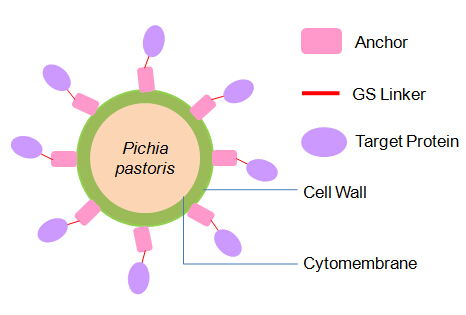From April 2013 to May 2014, I worked as a research assistant in the Key Laboratory of Molecular Biophysics of Ministry of Education, HUST; I led my independent research team to build two surface co-display systems of cellulases in Pichia pastoris.
Lignocellulose refers to plant dry matter (biomass). It is the combination of three different polymers (cellulose, hemicellulose and lignin); both cellulose and hemicellulose are carbohydrate polymers and they bind tightly to lignin (an aromatic polymer).
Lignocellulose is the most abundant resource of biomass on the earth. Unfortunately, people hardly use it. Why? Because lignocellulose is formed by many different monomers via different chemical bonds; while one enzyme can only break one kind or one family of chemical bonds. Since monosaccharides are the primary materials for bio-fuels, such as bio-ethanol, a large number of enzymes are required for the complete degradation.
Scientists do have discovered many kinds of cellulases in nature; and they are in charge of breaking different chemical bonds respectively. You may ask, “Why not we just add all the enzymes needed?” This is truly a solution, but the purification of so many enzymes is very expensive, laborious and time-consuming. So traditionally, people just discard or burn lignocellulose (e.g. dead wood, straw and bran) as waste.
Surface display of enzymes is a novel solution to the problem. Surface display technique is to express the target protein as a fusion protein with the anchor (protein originally located on the surface of the cell), thus the target protein can be located on the surface of the cell rather than secreted into the medium. The beauty of the technique is that the whole cell will act as the catalyst; there’s no need to purify the target protein (enzyme). Considering the low recovery of purification, whole-cell catalyst is efficient as well as convenient. Moreover, the restoration of cells is a lot easier than that of proteins.
Our team added a GS linker (a short soft peptide consisting of Glycine and Serine) between the target protein and the anchor to ensure that there’s no interference in the folding and the function of the two proteins.
Remember that many kinds of proteins located on the cell surface are candidates of the anchor; the specific location of the anchor is not necessarily in the cell wall as shown in the image above, it also can be located in the cytomembrane or the intermembrane space.
